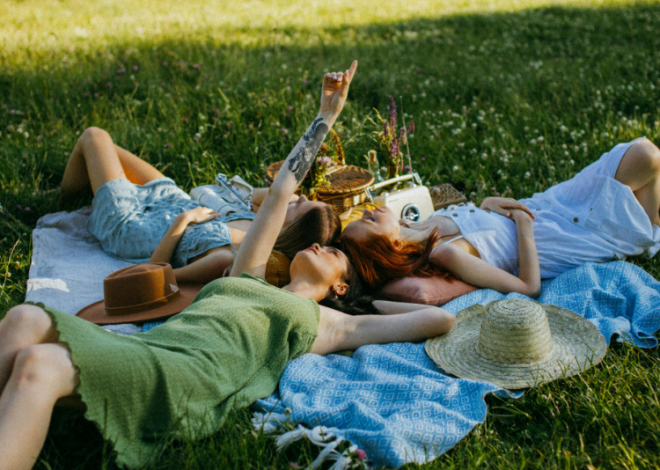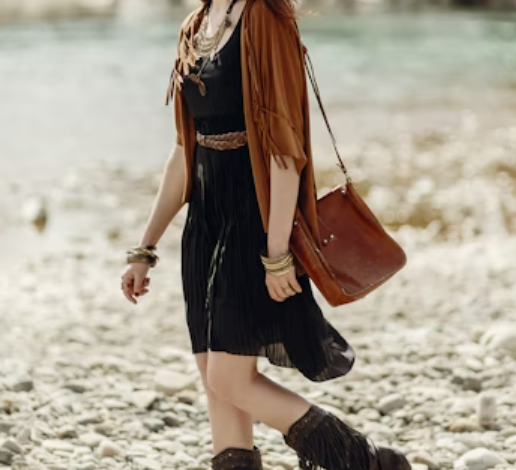
Nature-Inspired: Floral Patterns and Earthy Tones for Spring Freshness
When spring arrives, its promise of renewal and rejuvenation is reflected everywhere—from budding trees to blossoming flowers. In the world of design, nature serves as both muse and mentor. Floral patterns and earthy tones don’t just bring a touch of beauty; they ignite creativity and infuse spaces with a sense of calmness, freshness, and balance. Imagine the vibrant colors of a spring garden and the gentle, rustic vibes of freshly turned soil in one harmonious design. This article examines how nature-inspired themes, particularly floral patterns and earthy tones, can add depth and beauty to your living spaces and creative ventures.
The Inspiration of Nature in Design
Connection to the Environment
Nature has long been a source of inspiration for countless designers and creative minds. There’s something almost magical about how natural elements like flowers, leaves, and landscapes evoke feelings of freedom and vitality. People are intrinsically drawn to nature; the rustle of leaves in the wind or the burst of color from a wildflower can evoke both nostalgia and hope. When designers embrace this connection, they create more than just visually pleasing spaces—they create sanctuaries that resonate with an inner sense of wellbeing.
The Psychology Behind Natural Elements
Have you ever wondered why you feel calm when surrounded by greenery? It’s not by chance. There is a growing body of research linking exposure to natural elements with reduced stress and improved mood. The incorporation of floral motifs and earthy hues taps into our subconscious, soothing our minds and even influencing our behaviors positively. Color psychology tells us that earthy tones, such as warm browns and greens, foster a sense of safety and grounding, while the vivid pops of floral designs stimulate creativity and energy.
The Evolution of Floral Patterns in Design
Historical Significance
Floral patterns have enjoyed enduring popularity throughout the ages, making guest appearances in various cultures and eras. From the intricate tapestries of the Renaissance to the bold, statement florals of the 1960s, these patterns have evolved alongside society’s shifting perceptions of beauty and nature. In each era, the motifs have been more than mere decoration—they’ve told stories, carried symbolism, and even signified one’s status or affiliation. By understanding the historical significance, modern designers can take cues from the past while reinterpreting them to fit contemporary aesthetics.
Modern Interpretations
Today’s design scene plays with nature-inspired elements in innovative ways. Rather than strict reproductions of traditional floral prints, modern interpretations often blend abstract elements with hyper-realistic details. Designers frequently employ digital tools to create custom prints that celebrate imperfection and asymmetry. This interplay between historical homage and modern creativity has reinvigorated floral design, making it both timeless and trendy.
Incorporating Earthy Tones
Understanding Color Psychology
Earth tones are more than just colors; they are a bridge between our inner selves and the natural world. Shades like muted greens, warm browns, soft ochres, and dusty blues reflect the environment we see when we step outside. Designers use these hues to evoke an emotional response that’s both calming and invigorating. The soft blend of these natural colors often serves as a balancing backdrop against the more dynamic and varied floral patterns.
How Earth Tones Influence Mood and Atmosphere
Think about a room bathed in soft, earthy tones: the atmosphere immediately feels more natural and less contrived. Earth tones are known to evoke feelings of stability and calm, making them an essential component for any space that aims to be a refuge from the hustle and bustle of daily life. By strategically using these colors, one can create environments that promote mindfulness and relaxation—a perfect antidote to modern stress.
Practical Applications in Interior Design
Floral Patterns in Home Décor
Floral patterns have become a staple in home décor because of their versatility and intrinsic beauty. They can be integrated through wallpaper, upholstery, bedding, or even accent pieces. Using floral motifs can create a layered look that is both visually interesting and welcoming. Imagine strolling into a room where a bold floral print is offset by neutral furnishings; it creates a dynamic interplay that captures the eye and invites further exploration. Even the simplest of spaces is elevated when nature’s fingerprints are there to soften modern lines.
Earthy Tones in Furniture and Accents
Integrating earthy tones into your furniture selection and décor accents helps ground the overall design. Wood, stone, and natural fibers add texture and reinforce the organic theme. For instance, a reclaimed wood coffee table paired with cushions in natural linen not only looks inviting but also communicates a conscientious choice for sustainability and authenticity. When these elements are combined with vibrant floral patterns, they create a dialogue between modern living and the enduring beauty of nature.
Fashion and Nature-Inspired Trends
Floral Patterns in Clothing
Fashion is no stranger to the allure of nature. Floral prints have swirled through the history of fashion, offering designers a seemingly endless palette of possibilities. The playful yet refined aesthetic of florals can be found in dresses, scarves, and even footwear. This trend emphasizes individuality and creativity, allowing wearers to express their connection with nature in a vibrant, tangible way. Moreover, the adaptability of floral patterns means they can be as subtle or as loud as desired, making them a must-have in any wardrobe.
Earthy Hues in Accessory Design
Accessories offer another avenue to experiment with earthy tones. Designers frequently incorporate these hues into handbags, shoes, and jewelry. Earthy colors are incredibly versatile, capable of lending an upscale, understated sophistication or a relaxed, bohemian vibe, depending on how they’re used. The subtle play between bright florals and muted earthy tones creates a balanced aesthetic that is both approachable and refined—a visual metaphor for the interplay between nature’s bold beauty and its gentle, grounding force.

Artistic Expression and Creativity
Illustrations and Mixed Media Techniques
In the realm of art, blending floral patterns with earthy tones is a powerful means of expression. Artists use these elements to craft compositions that mirror the complexity of nature itself. Whether it’s through traditional media like watercolors or pencils or through innovative mixed media approaches, the use of natural motifs fosters a deep connection to the world. The juxtaposition of dynamic floral details with the soft, organic feel of earth-based hues can evoke a range of emotions, from serene tranquility to vibrant celebration.
From Traditional Art to Digital Creations
The evolution of artistic techniques has further blurred the lines between conventional and digital art. Traditional methods meet digital innovation as designers and artists experiment with both hand-drawn elements and computer-generated imagery. This convergence allows for endless creative possibilities, ensuring that nature’s inspiration remains as dynamic as ever. Digital tools enable fine control over color blending and pattern detailing, which means that every piece of artwork can reflect the rich tapestry of nature in increasingly sophisticated ways.
Sustainability and Eco-Friendly Design
Eco-friendly Materials and Techniques
Embracing nature isn’t solely about aesthetic pleasure; it’s also an acknowledgment of our responsibility toward the environment. Eco-friendly design practices are gaining popularity, largely influenced by the desire for sustainable living. Natural dyes, recycled materials, and sustainable production methods are integral to creating a design that is both beautiful and environmentally conscious. This approach not only reduces the ecological footprint but also encourages a deeper connection between the consumer and the planet.
Market Trends and Consumer Preferences
Data on Natural Design Popularity
Recent market analyses indicate a significant shift toward nature-inspired designs. Consumers are increasingly favoring sustainable products and designs that incorporate natural elements. There is a growing trend of choosing authenticity over artificiality, as people seek to align their lifestyles with their values. Sales data reveals that products featuring floral prints and earthy hues perform notably well across various sectors—from home décor to fashion—underscoring a broader societal shift towards embracing nature as a lifestyle choice.
Challenges and Considerations in Nature-Inspired Design
Balancing Authenticity and Trendiness
As with any design trend, there is a delicate balance between authenticity and trendiness. While nature-inspired elements can elevate the aesthetic value of a product, they also run the risk of feeling overdone or superficial if not implemented thoughtfully. How does one maintain the genuine allure of nature without falling into clichéd or overly commercialized interpretations? The answer lies in striking a balance between contemporary execution and a deep respect for the organic, imperfect beauty found in nature.
Overcoming Design Pitfalls
Every design journey has its pitfalls. One challenge in nature-inspired design is ensuring that the elements do not compete for attention. Too many bold patterns or a clashing mix of colors can create visual chaos rather than a cohesive environment. Designers must carefully select a palette and style that harmonizes well. It’s akin to composing a piece of music—the individual notes (or design elements) must contribute to an overall melody that resonates with the soul. Paying close attention to detail and proportion can make all the difference, enabling designs to remain both fresh and functional.
Conclusion
Nature has a way of inspiring us to pause, reflect, and appreciate beauty in its purest form. By integrating floral patterns and earthy tones into our design lexicon, we create more than aesthetically pleasing environments—we build spaces that nurture our well-being, stimulate our creativity, and encourage sustainable living. Whether you are revamping your home décor, curating a fashion statement, or embarking on an artistic project, the blend of nature’s organic beauty with modern design principles offers a timeless appeal. It’s a reminder that sometimes, the answers to modern challenges lie in the rhythms of nature itself—a perennial source of inspiration that remains ever-relevant in our contemporary world.


